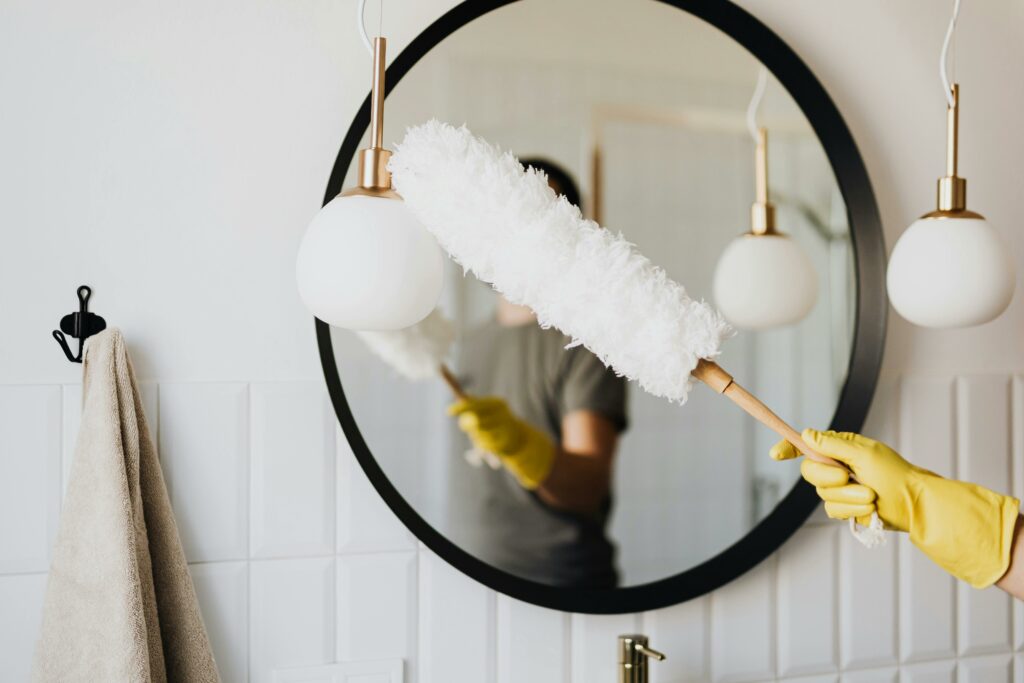When to Call a Pro: A Guide to Common Home Repairs
There’s a certain pride that comes with fixing things around the house. Tighten a leaky faucet? Feels good. Patch up some drywall? Look at you, homeowner of the year. But somewhere between swapping out a lightbulb and rewiring an entire breaker panel is a blurry line — one that separates DIY from “do not touch.”

The truth is, knowing when to call in a professional isn’t a sign of failure. It’s smart. It saves time, money, and in many cases, your safety.
So before you spend three hours Googling how to replace a water heater, here’s a breakdown of common home repairs — and when to pick up the phone instead of the wrench.
1. Anything Involving Gas? Call. A. Pro.
If there’s one thing you don’t want to “wing,” it’s gas-related work.
Whether it’s a stove, water heater, furnace, or fireplace — gas is serious business. Leaks can be invisible, odorless (if the additive fails), and extremely dangerous.
Warning signs to call immediately:
- You smell gas (even faintly)
- The pilot light won’t stay lit
- You hear a hissing sound near a gas line
- You’re planning to install, move, or cap a gas appliance
Even if you’re handy, gas work is not a YouTube project. Call a licensed pro — every time.
2. Electrical Work: Know Your Limits
Sure, changing a light fixture is one thing. But the minute you’re dealing with wiring, panels, or anything behind the walls, proceed with caution.
Electricity doesn’t offer second chances. One wrong move can cause a fire, serious injury, or damage that’s far more expensive than the job would’ve cost in the first place.
DIY-safe tasks:
✔ Replacing outlet covers
✔ Swapping out light bulbs
✔ Installing dimmer switches (if you understand the wiring)
Call a pro if:
- You’re upgrading or adding outlets
- Lights are flickering randomly
- You’re messing with the breaker box
- The job requires permits
Safety aside — a licensed electrician will get it done faster and up to code.
3. Plumbing: DIY Until It Gets Wet
Some plumbing issues are beginner-friendly. Others can flood your bathroom before you even find the shutoff valve.
DIY-friendly jobs:
✔ Unclogging sinks or toilets with a plunger or snake
✔ Replacing showerheads
✔ Fixing a running toilet
Call a plumber if:
- You see water stains on ceilings or walls
- There’s a persistent leak under the sink
- You’re replacing pipes, valves, or dealing with main water lines
- You need to shut off water to more than one room
Small leaks can turn into big bills fast — and water damage is no joke.
4. Walls, Floors, and Ceilings: Looks Can Be Deceiving
Holes in drywall? Sure. Scratched wood floor? Sand and seal. But if your floors are sagging, walls are bowing, or your ceiling is cracking, that’s structural — and you don’t want to guess.
When to DIY:
✔ Cosmetic drywall patches
✔ Painting or touch-ups
✔ Filling small tile cracks
When to call a pro:
- You notice cracks larger than 1/4 inch in walls or foundation
- Floors feel uneven or bounce underfoot
- Ceilings show stains or bowing
- Doors and windows suddenly stop closing properly (a sign something’s shifting)
These could be signs of water damage, foundation issues, or framing problems. Better to have someone inspect early than pay for major reconstruction later.
5. Windows and Doors: It’s Not Always Just a Draft
You might think a window that won’t close properly is a minor annoyance — but it can be a gateway to mold, pests, and skyrocketing energy bills.
DIY jobs:
✔ Resealing or caulking gaps
✔ Replacing weatherstripping
✔ Tightening loose hinges
Call in a pro if:
- There’s visible water damage around the frame
- The frame is warped or the window won’t open/close fully
- Your energy bills have spiked and you suspect poor insulation
- You’re replacing more than one unit
Especially with older homes, pros can assess whether your windows or doors need repair or full replacement — and ensure they’re installed to code.
6. Roofing and Gutters: Stay Off the Ladder (Mostly)
We get it — climbing up there with a tool belt feels empowering. Until you slip. Or misdiagnose the issue. Or fall through your own roof.
DIY-safe tasks:
✔ Cleaning gutters (with caution)
✔ Replacing a few shingles, if you know what you’re doing and the roof is walkable
✔ Installing gutter guards
Call a roofer if:
- You see sagging spots or soft areas
- There’s a leak inside after rain
- Shingles are curling, missing, or lifting across large areas
- Your roof is more than 20 years old
Roof work is high-risk, and improper repairs often cause more damage than the original issue. Plus, many warranties require licensed work.
Final Rule: If You’re Unsure, Ask
Home repairs are one part logic, one part instinct. If your gut says, “This seems a bit beyond me,” listen.
Yes, calling a pro costs money. But doing the job wrong costs more — and risks your safety.
A good rule of thumb?
If it can flood, shock, collapse, or burn — it’s probably not a DIY job.
Final Thoughts: DIY Is Empowering — But So Is Knowing When to Step Back
There’s no shame in calling a professional. In fact, it’s one of the smartest moves a homeowner can make. You don’t have to know everything — you just have to know when it’s time to ask for help.
You’ll sleep better. Your house will thank you. And your future self? They’ll be real glad you didn’t try to reroute your plumbing using a Reddit thread.







